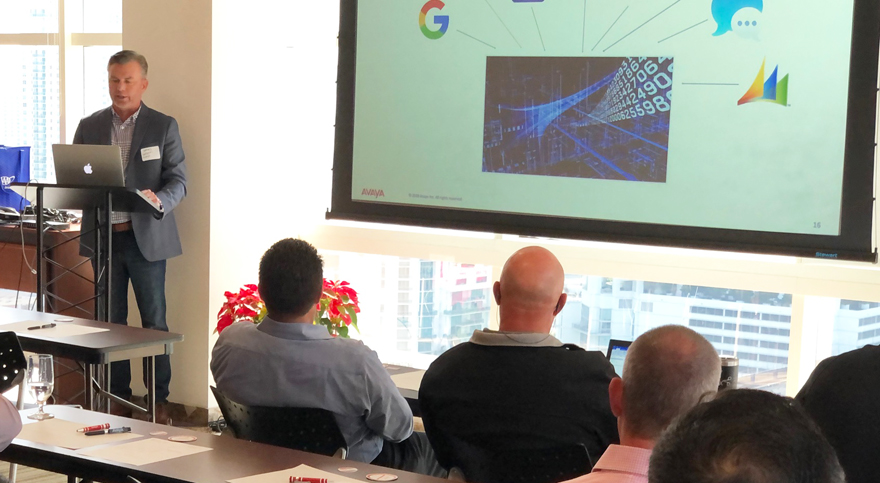
Consumer preferences are changing faster and faster, disrupting traditional service patterns and challenging organizations to keep up. It takes careful planning and a flexible corporate culture to keep up with the market, according to James Udseth, US CX Innovation, Avaya.
“You have to know your customers and understand their expectations,” said Udseth in his talk on “Digital Disruptions and the Art of the Possible” at the inaugural South Florida Chapter meeting in Miami on December 5. “To serve Millennials, you need social media and text, as they won’t use voice or IVR. But you still have to remember to support people who will never use a computer.”
Udseth said the customer experience lies at the core of digital transformation initiatives. Therefore, IT professionals should monitor their companies’ customer effort scores. “Pay attention and measure how easy is it to do business with you,” he said. If that score starts to fall, you need to take action right away.
Udseth outlined several trends in the market, and provided suggestions for addressing those issues.
- Omnichannel service. “Everyone wants to connect by different channels,” he said, citing SMS chats, Facebook Messenger and WhatsApp as examples. “That means you need to have an effective mobile strategy for those types of channels.”
- Reviews and ratings. Many companies live or die based on their five-star ratings, Udseth said. “We are all influenced by those comments, and we take advice from people we don’t know.” Therefore, organizations should monitor those reviews on a frequent basis and respond whenever appropriate.
- Data as an asset. Your contact center gathers a wealth of data every day, and the business intelligence team can extract valuable insights from that information. For example, you could send consumers a thank-you note or a special offer on their birthdays, or a message reminding them that it’s been a three months since their last order from your site.
- The rise of wearables like the Apple watch. “Think about use cases for wearable and sensor technology, and see if they can help you deliver better service,” Udseth said.
- Putting the customer at the center. Empathy is an important trait in contact center agents and supervisors, who need to be active listeners, Udseth said.
- Voice-activated devices. Many consumers have used Siri, Alexa or Google Assistant to reach out to companies, and contact center platforms and agents need to be able to handle this growing channel.
- Develop new apps. IT professionals can use Avaya Breeze or third-party snap-ins to improve service levels. One example is an app that makes it easy for agents to reconnect with consumers in the event of a dropped call. “We believe in the art of the possible, and will work with you to make things happen,” he added.
But the most important advice from Udseth was not to rely on technology alone to address evolving consumer trends. “If you apply old thinking with new technology, you will fail,” he said. “You have to shift to a customer-centric model and enable all channels. Understand where you are today, and focus on where you need to be and how you can get there. Good luck!”

